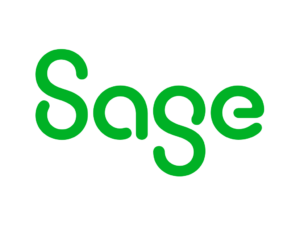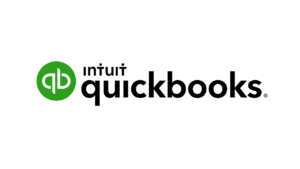Small business accounting can be daunting. But, this handy guide will help in getting your small business accounting right from the very beginning.
Step one: Know what’s required
It’s important to keep financial records from the very beginning of a business, no matter how incidental the expenses or how rudimentary the system. Companies based in the UK must be listed on Companies House and businesses must be registered with HMRC. Make sure to organise a financial record-keeping system too, which is legally required, and set up a business bank account. This will allow your business to take out a loan, use a business credit card and take card and online payments from clients.
Step two: Understand bookkeeping and accounting
Small business bookkeeping and small company accounting are often confused with one another or taken to mean the same thing. But they’re not! Bookkeeping is the process of recording and reporting company finances and acts as a small but crucial part of basic business accounting.
By extension, accounting is the process of analysing and examining financial information to create a business strategy, establish forecasts and make decisions.
As a small business, it’s worth first getting to grips with the fundamentals of coherent bookkeeping, as there is a legal obligation to record financial data. You can always expand to accounting once you and your business are ready.
Step three: Choosing a system
In the past, businesses ran a general ledger, a physical book full of written financial records. This is perhaps the most important accounting record for a small business. These days, most use computer software to maintain their ledgers and record incomings, outgoings and general accounts.
There are three methods of basic bookkeeping for small businesses. Many opt for the most straightforward and choose a spreadsheet software, something like Microsoft Excel or Google Sheets, to track finances. Before you choose, it’s useful to know whether you will be using a single- or double-entry bookkeeping system.
Spreadsheet software is often cheap and straightforward – many small business owners will find they already have Excel downloaded onto their computers. But woefully, we’ve all heard the tales of Excel nightmares and spreadsheets have their downsides. Famously, J.P. Morgan lost more than $2bn thanks to a spreadsheet issue, compounded as a single error which fed into other calculations.
Another option for small company maintenance is desktop accounting bookkeeping software, a downloaded external programme. Examples of this kind of software include QuickBooks Desktop, VT, and Sage 50, a desktop accounting system that can be used to share data with productivity applications using the cloud.
Desktop software can help mitigate some of the flaws inherent to spreadsheets. Perks to this kind of small business bookkeeping include the ability to make forecasts, reduced time spent manually inputting data and greater support and security from providers. Small business owners, however, can be put off by the higher price to entry, need to update software and difficulties sharing data.
The most advanced option of the three is cloud accounting, which uses cloud-based bookkeeping software. Examples of cloud accounting software include Freshbooks, QuickBooks Online, Zoho Books and Wave. This method means you don’t have to install software onto your device and can access accounts from anywhere in the world, provided you have an internet connection. You don’t even need a computer – a phone or tablet will suffice.
Take time to shop around and have a look through the software available on the market. Some of the most useful basic accounting features for small businesses include timesaving automation, which can be set up to help save time on invoicing and handling accounts. This article discusses some of the best accounting software available for small businesses.
Software can also help with tax preparation. Programs offer automatic calculations, reporting and multiple tax rate features. Forgo the payday headache: also available in the market are payroll and payment processing services which can make it easier to pay employees.
Each system has individual pros and cons, and it is worth spending time trying to figure out what might work best for an individual business. Alternatively, some small businesses choose to renounce all financial duties and outsource, employing an external bookkeeper or accountant.
Check out some of the best accounting software for UK small businesses, below:
Sage

Sage Accounting is a beginner-friendly, cloud-based solution ideal for small businesses and sole traders. It simplifies invoicing, VAT submissions, and bank reconciliation, with HMRC recognition and Making Tax Digital compliance. AI-powered tools like Sage Copilot automate routine tasks, offer real-time insights, and streamline bookkeeping. With flexible pricing plans, intuitive dashboards, and secure cloud access, Sage makes managing finances easy, even if you’re just starting out.
Starts from £18 per month (excl. VAT). Intro offer: 90% off for 3 months.
QuickBooks
Quickbooks is a comprehensive accounting solution for small businesses. As well as standard accounting features like self-assessment support, invoicing and cash flow, it offers a customer relationship management (CRM) system, which helps you keep on top of your customer database, and AI-powered income and expenses management.
Starts from £1.60 per month (Intro offer 90% off for 6 months, then £16).
Xero

Xero is a user-friendly, cloud-based accounting platform designed for sole traders and small businesses. With its clean interface, HMRC-recognised MTD compliance, and secure real-time access, it makes managing finances simple, even for those without accounting experience. Xero automates bank reconciliation, invoicing, and expense tracking, and offers flexible add-ons like payroll, project tracking, and multi-currency. Its scalable plans and built-in integrations make it easy to grow with your business.
Starts from £7 per month (excl. VAT). Intro offer: 90% off for 6 months. Each package has a 30-day free trial.
Zoho Books

Zoho Books is a powerful yet beginner-friendly cloud accounting platform designed for small to mid-sized businesses. Fully MTD-compliant and rich in features, it offers real-time financial insights, automated bank feeds, and unlimited invoicing. With built-in tools for VAT returns, time tracking, and inventory management (on higher plans), plus flexible automation and client portals, Zoho Books helps you stay organised and grow confidently, without the complexity.
Step four: Getting started
Once you’ve picked an accounting system and settled in, it’s important to start recording financials to get an accurate picture of what’s happening under the bonnet of your business. At this stage, small businesses must make sure they are recording transactions correctly and in the right account. Mismatched account balances mean companies won’t be able to balance or close their books every quarter – by zeroing out income and expenses and entering net profits or losses into the balance sheet – or make informed financial decisions.
Small businesses can also take the opportunity of investigating their finances to manage taxation, set up payroll and calculate gross margins.
With the books balanced, you can start to use the accounts to generate financial reports. Many will find it useful to create a balance sheet – a document which summarises assets, liabilities and equities within a business. The balance sheet shows the current health of a company and can indicate things like whether a business can expand or should concentrate on cutting costs.
Similarly, a quarterly profit and loss statement can be a useful resource for small business accounting. This document breaks down revenues, costs and expenses over an established time period. A profit and loss template can also be used to compare sales and expenses and make forecasts.
Cash flow statements are a mandatory part of a company’s financial reports. They are similar to profit and loss statements but do not include non-cash items. Cash flow statements help show where businesses are earning and spending money as well as immediate viability and their capacity to pay bills.
As you grow, you will want to continuously reassess your chosen bookkeeping method. While a business is small, it might make sense to begin with a simple Excel spreadsheet, but as the company expands you may want to think about a new bookkeeping system. Eventually, perhaps, you could grow big enough to hire an in-house accountant.
Step five: The takeaway
Whichever small business bookkeeping and accounting system you choose, getting to grips with the basics will help you understand your company, make savvy business decisions and better manage finances. Put the work in early and save time, money and heartache by setting up a scalable, coherent system right from the start – you will always be pleased you did so.
This article is part of a paid-for information campaign for MVF
See also: Basics of accounting for entrepreneurs
Alice Feilden
Alice Feilden - Reporter at Bonhill plc. More by Alice Feilden






